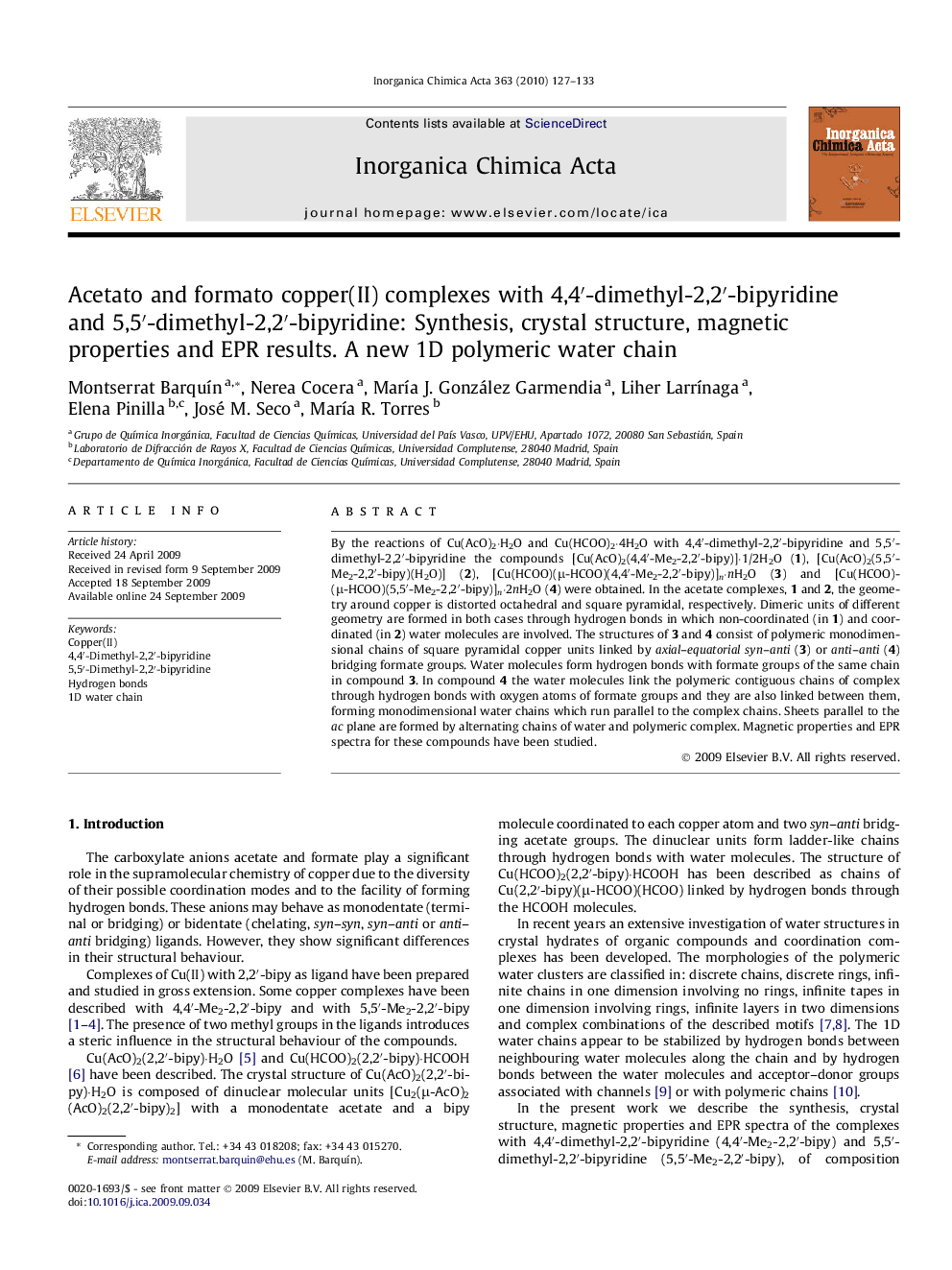| Article ID | Journal | Published Year | Pages | File Type |
|---|---|---|---|---|
| 1311305 | Inorganica Chimica Acta | 2010 | 7 Pages |
By the reactions of Cu(AcO)2·H2O and Cu(HCOO)2·4H2O with 4,4′-dimethyl-2,2′-bipyridine and 5,5′-dimethyl-2,2′-bipyridine the compounds [Cu(AcO)2(4,4′-Me2-2,2′-bipy)]·1/2H2O (1), [Cu(AcO)2(5,5′-Me2-2,2′-bipy)(H2O)] (2), [Cu(HCOO)(μ-HCOO)(4,4′-Me2-2,2′-bipy)]n·nH2O (3) and [Cu(HCOO)(μ-HCOO)(5,5′-Me2-2,2′-bipy)]n·2nH2O (4) were obtained. In the acetate complexes, 1 and 2, the geometry around copper is distorted octahedral and square pyramidal, respectively. Dimeric units of different geometry are formed in both cases through hydrogen bonds in which non-coordinated (in 1) and coordinated (in 2) water molecules are involved. The structures of 3 and 4 consist of polymeric monodimensional chains of square pyramidal copper units linked by axial–equatorial syn–anti (3) or anti–anti (4) bridging formate groups. Water molecules form hydrogen bonds with formate groups of the same chain in compound 3. In compound 4 the water molecules link the polymeric contiguous chains of complex through hydrogen bonds with oxygen atoms of formate groups and they are also linked between them, forming monodimensional water chains which run parallel to the complex chains. Sheets parallel to the ac plane are formed by alternating chains of water and polymeric complex. Magnetic properties and EPR spectra for these compounds have been studied.
Graphical abstractThe complexes [Cu(AcO)2(4,4′-Me2-2,2′-bipy)]·½H2O (1), [Cu(AcO)2(5,5′-Me2-2,2′-bipy)(H2O)] (2), [Cu(HCOO)(μ-HCOO)(4,4′-Me2-2,2′-bipy)]n·nH2O (3) and [Cu(HCOO)(μ-HCOO)(5,5′-Me2-2,2′-bipy)]n·2nH2O (4) were obtained and characterized.In 1 and 2, the geometry around copper is distorted octahedral and square pyramidal, respectively. Dimeric units of different geometry are formed in both cases through hydrogen bonds. The structures of 3 and 4 consist of polymeric monodimensional chains of square pyramidal copper units linked by axial–equatorial syn–anti (3) or anti–anti (4) bridging formate groups. In compound 4 monodimensional water chains run parallel to the complex chains.A ferromagnetic interaction is observed in 3 and 4.Figure optionsDownload full-size imageDownload as PowerPoint slide
